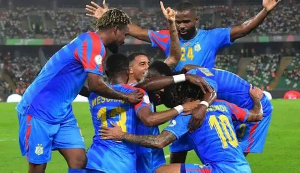Mobile Money transactions rose by 65 per cent in 2020 with accounts across the globe hitting 1.2 billion.
The Global System for Mobile telecommunications Association (GSMA) disclosed this yesterday while unveiling its yearly ‘State of the Industry Report on Mobile Money.'
It noted that there was a dramatic acceleration in mobile transactions during the COVID-19 pandemic as lockdown restrictions limited access to cash and financial institutions.
GSMA said it found out that the number of registered accounts grew by 13 per cent globally in 2020 to more than 1.2 billion – double the forecast. It stressed that the fastest growth was in markets where governments provided significant pandemic relief to their citizens.
GSMA in the report observed that to minimise the economic toll of COVID-19, many national governments distributed monetary support to individuals and businesses.
According to the report, the value of government-to-person payments quadrupled during the pandemic, with the mobile money industry working hand-in-hand with administrations and NGOs to distribute social protection and humanitarian payments quickly, securely, and efficiently to those in need.
Facilitating this type of direct income support payments, the report noted, is one example of how mobile money provides a financial lifeline to underserved communities. It stressed that mobile money providers have also provided in-kind support, including the distribution of personal protective equipment (PPE) and hand sanitising gel at agent counters.
GSMA’s Chief Regulatory Officer, John Giusti, said: “We see that mobile money is a powerful tool for expanding the financial inclusion of women in low- and middle-income countries.
“This year’s report, however, found that across markets women are still 33 per cent less likely than men to have a mobile money account. The GSMA and its members are committed to closing this gender gap by addressing the barriers that prevent women from accessing and using mobile financial services.”
Giusti said closing the gap requires a collaborative and concerted effort. He stressed that many providers have committed to increasing the proportion of female customers.
“One example of an innovative approach to this is launching micro-entrepreneur products that can be used in markets where women represent the majority of vendors and customers,” he stated.
The report noted that for the first time, more than $1 billion was sent and received in the form of remittances globally every month via mobile money.
It noted that despite early fears that transactions would decline as people worldwide suffered job losses and income cuts during the pandemic, it remains clear that diasporas continue to support family and friends back home.
As a result, the total value of transactions increased by 65 per cent to an annual total of $12.7 billion in 2020.
In working towards achieving the Sustainable Development Goals (SDGs), the GSMA said it remains committed to reducing inequalities among countries when sending money internationally. According to GSMA’s research, mobile money provides an affordable channel for connecting people to vital financial resources. The mobile money ecosystem has been strengthened by an increasing number of strategic partnerships established between money transfer organisations and mobile money providers.
The GSMA observed that as the COVID-19 pandemic negatively impacted people’s lives and weakened economies, regulators responded with a variety of measures aimed at reducing the impact.
The research found that the pandemic gave fresh urgency to the need for regulatory change to facilitate greater digitalisation. For instance, in many markets, transaction limits were increased to allow more funds to flow through mobile money. Additionally, as demand rose for non-physical payments, some regulators classified mobile money agents and their supply chains as essential services.
The reports said that over 50 per cent of mobile money agents were continuously active throughout the pandemic, which was crucial for service continuity and maintaining liquidity.
While some of the regulatory reforms made in response to the pandemic have been positive for customers and providers, GSMA said the implementation and extension of fee waivers have hurt mobile money providers’ core revenue stream.
According to it, mobile money providers depend mainly on transactional revenues to sustain their business. Regulators are strongly encouraged to work closely with the industry to ensure sustainability going forward.
Business News of Thursday, 25 March 2021
Source: guardian.ng













